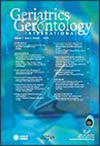Predictive value of the Hemoglobin, Albumin, Lymphocyte and Platelet score for mortality in geriatric patients presenting to the emergency department
Abstract
Aim
The Hemoglobin, Albumin, Lymphocyte and Platelet (HALP) score, calculated as hemoglobin × albumin × lymphocytes / platelets, serves as a novel biomarker that can provide insights into a patient's nutritional status, anemia status and inflammatory processes. This study aimed to investigate the predictive value of the HALP score for mortality among geriatric patients presenting to the emergency department.
Methods
This retrospective study was carried out at the emergency department of a tertiary hospital. Patients aged ≥65 years who presented to the emergency department between 1 January 2018 and 1 January 2024 were included in the study. A total of 62 262 patients who visited our emergency department were enrolled. Patient data, including hemoglobin, albumin, lymphocyte and platelet values; age; sex, the reason for hospital presentation; and outcome (mortality or discharge) were obtained from electronic medical records. HALP scores were calculated for the patients, and statistical analyses were carried out.
Results
Of the patients, 32 410 were men, and the mean age was 73 years. Within this cohort, in-hospital mortality occurred in 3093 of the patients. The HALP score was significantly lower in patients who died compared with those who were discharged (P < 0.001).
Conclusion
Due to its cost-effectiveness and ease of calculation, the HALP score appears to be more feasible in predicting mortality in the emergency department compared with other scoring systems. Geriatr Gerontol Int 2025; 25: 387–391.


 求助内容:
求助内容: 应助结果提醒方式:
应助结果提醒方式:


